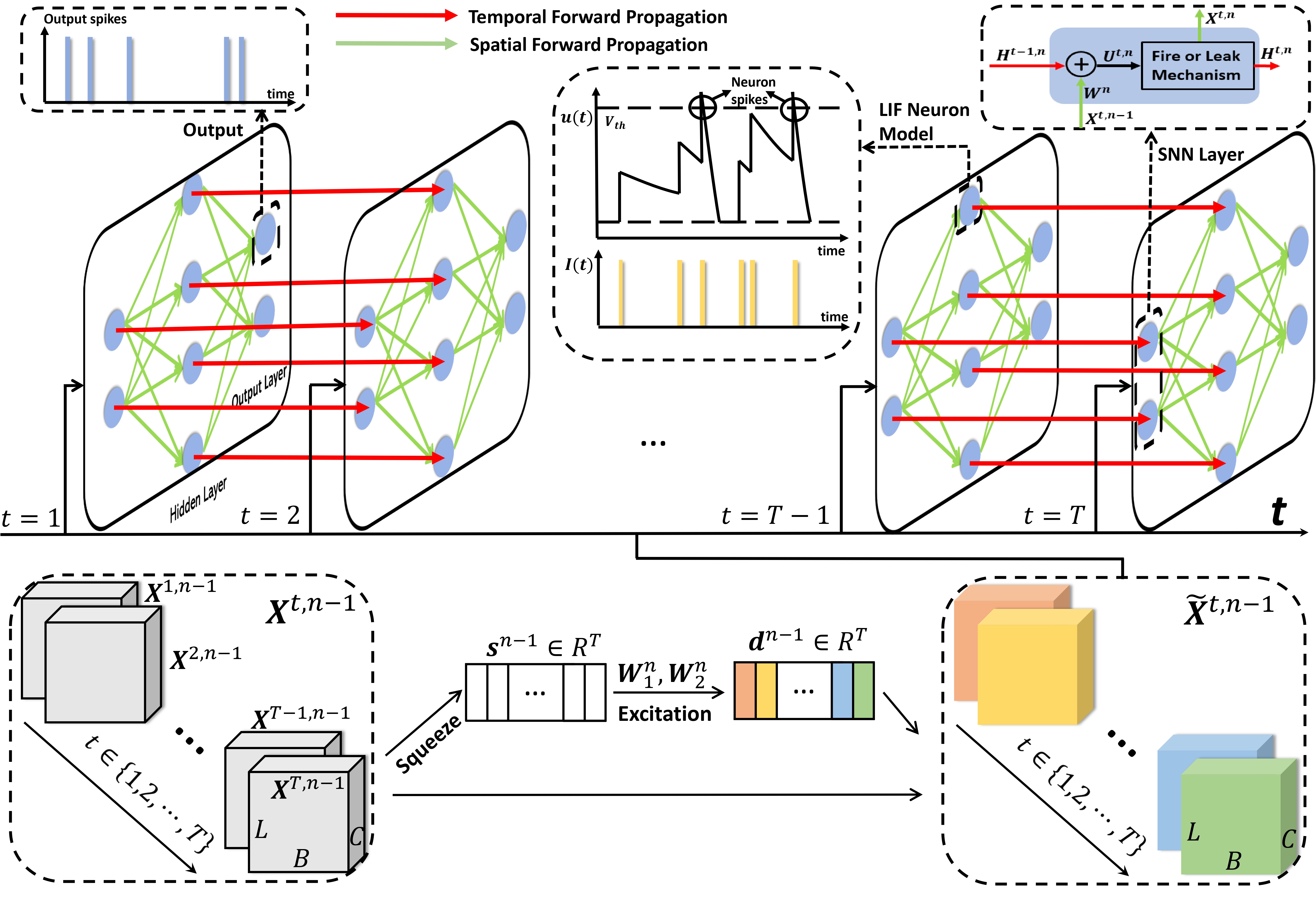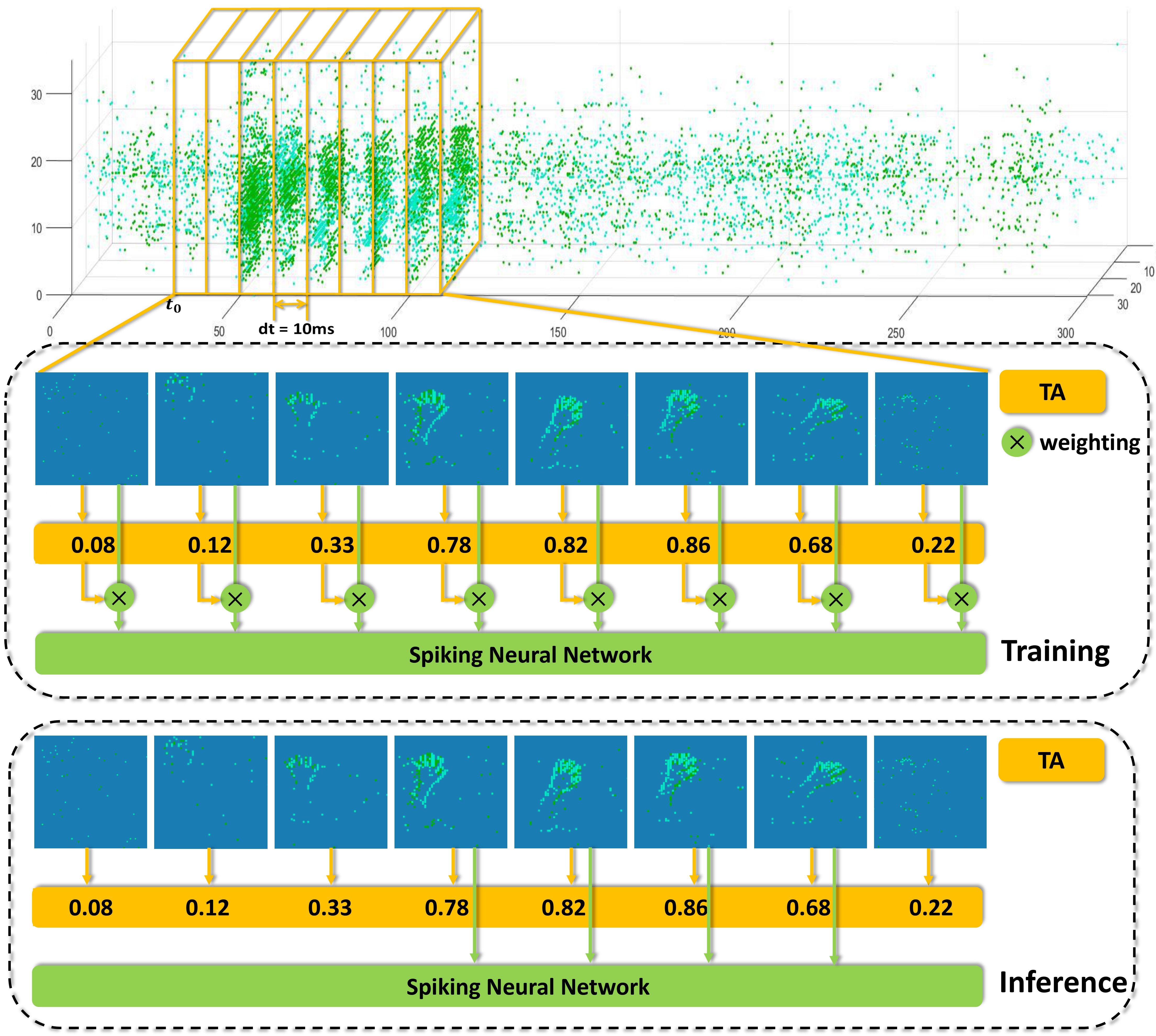How to effectively and efficiently deal with spatio-temporal event streams, where the events are generally sparse and non-uniform and have the us temporal resolution, is of great value and has various real-life applications. Spiking neural network (SNN), as one of the brain-inspired event-triggered computing models, has the potential to extract effective spatio-temporal features from the event streams. However, when aggregating individual events into frames with a new higher temporal resolution, existing SNN models do not attach importance to that the serial frames have different signal-to-noise ratios since event streams are sparse and non-uniform. This situation interferes with the performance of existing SNNs. In this work, we propose a temporal-wise attention SNN (TA-SNN) model to learn frame-based representation for processing event streams. Concretely, we extend the attention concept to temporal-wise input to judge the significance of frames for the final decision at the training stage, and discard the irrelevant frames at the inference stage. We demonstrate that TA-SNN models improve the accuracy of event streams classification tasks. We also study the impact of multiple-scale temporal resolutions for frame-based representation. Our approach is tested on three different classification tasks: gesture recognition, image classification, and spoken digit recognition. We report the state-of-the-art results on these tasks, and get the essential improvement of accuracy (almost 19%) for gesture recognition with only 60 ms.
- Python 3.7.4
- PyTorch 1.7.1
- tqdm 4.56.0
- numpy 1.19.2
- Download DVS128 Gesture and put the downloaded dataset to /DVSGestures/data, then run /DVSGestures/data/DVS_Gesture.py.
TA_SNN
├── /DVSGestures/
│ ├── /data/
│ │ ├── DVS_Gesture.py
│ │ └── DvsGesture.tar.gz
- Change the values of T and dt in /DVSGestures/CNN/Config.py or /DVSGestures/CNN_10clips/Config.py then run the tasks in /DVSGestures.
eg:
python SNN_CNN.py
- View the results in /DVSGestures/CNN/Result/ or /DVSGestures/CNN_10clips/Result/.
- Download CIFAR10-DVS and processing dataset using official matlab program, then put the result to /CIFAR10DVS/data.
TA_SNN
├── /CIFAR10DVS/
│ ├── /data/
│ │ ├── /airplane/
│ │ | ├──0.mat
│ │ | ├──1.mat
│ │ | ├──...
│ │ ├──automobile
│ │ └──...
- Change the values of T and dt in /CIFAR10DVS/CNN/Config.py or /CIFAR10DVS/CNN_10clips/Config.py then run the tasks in /CIFAR10DVS.
eg:
python SNN_CNN.py
- View the results in /CIFAR10DVS/CNN/Result/ or /CIFAR10DVS/CNN_10clips/Result/.
- Download SHD Dataset and put the downloaded dataset to /SHD/data.
TA_SNN
├── /SHD/
│ ├── /data/
│ │ ├── shd_train.h5
│ │ └── shd_test.h5
- Change the values of T and dt in /SHD/MLP/Config.py then run the tasks in /SHD.
eg:
python SNN_MLP_3.py
- View the results in /SHD/MLP/Result/.
- /module/TA.py defines the Temporal Attention layer and /module/LIF.py,LIF_Module.py defines LIF module.
@inproceedings{yao2021temporal,
title={Temporal-wise attention spiking neural networks for event streams classification},
author={Yao, Man and Gao, Huanhuan and Zhao, Guangshe and Wang, Dingheng and Lin, Yihan and Yang, Zhaoxu and Li, Guoqi},
booktitle={Proceedings of the IEEE/CVF International Conference on Computer Vision},
pages={10221--10230},
year={2021}
}

